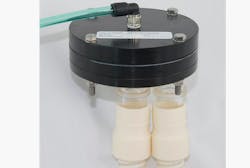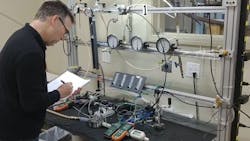Equilibar, an engineering and manufacturing company in Fletcher, North Carolina, announced that the U.S. Food and Drug Administration (FDA) has granted Emergency Use Authorization for the BioMedInnovations (BMI) SuppleVent. SuppleVent is a ventilator system that utilizes Equilibar patented back pressure regulator technology, licensed to BMI for medical devices.
The effort to design an alternative ventilator began as a way to address the increased need for life-saving healthcare equipment for people experiencing Acute Respiratory Distress Syndrome and other serious breathing difficulties due to the COVID-19 pandemic.
Further collaboration came when BMI made connections with Roush Yates Manufacturing Solutions, a division of Roush Yates Engines, and Joe Gibbs Racing to build components for the ventilator. Indy Car engine designer, Honda Performance Development, also assisted with testing and engineering. The manufacturing capabilities of the motorsports companies will ensure that the devices can be produced quickly and in volume.
“The innovation that I’ve witnessed during the past two months has been breath-taking,” Jennings said. “Our team has had the chance to work with world-class scientists at one of the nation’s premier laboratories as well as with the truly visionary team at BMI. To be able to partner with legendary North Carolina motorsports companies on top of that has been an experience I won’t forget.”
The SuppleVent is a simple assembly of components with an intuitive and clinician-friendly interface that includes full alarms and low power operation from a compressed gas source. Forward flexibility is included in the system architecture to add additional displays, data logging, wireless communication, closed loop control and other features, if desired. The design prevents high pressures that can damage the lung and can be used in mobile settings.




